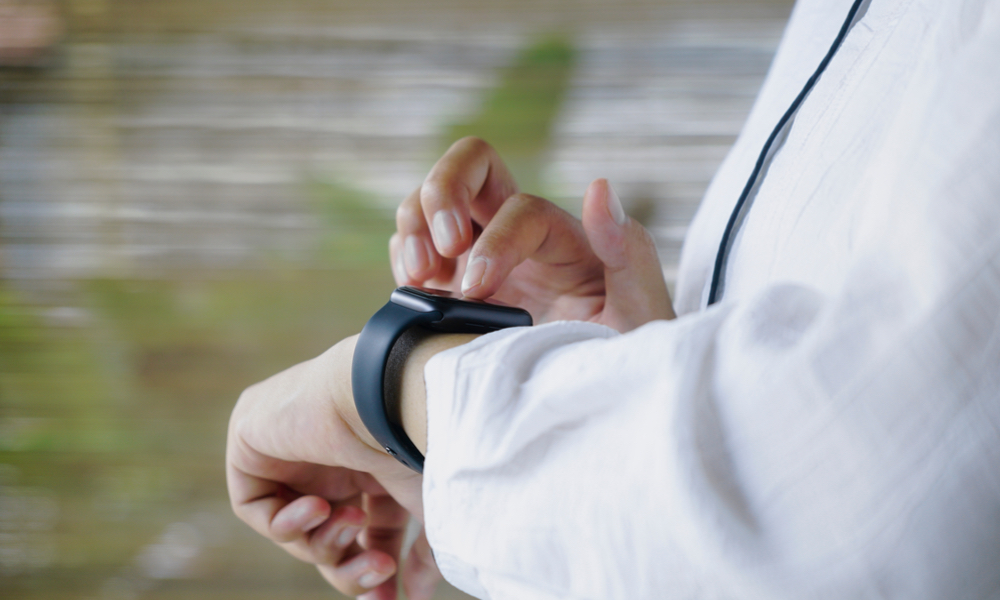Could Your Apple Watch Detect COVID-19? Stanford Researchers Think So
 Credit: raditya / Shutterstock
Credit: raditya / Shutterstock
Toggle Dark Mode
Among the other many health benefits of the Apple Watch, it looks like it could soon be useful in detecting signs and symptoms of COVID-19.
At least that’s the hope of a new study being conducted by Stanford University as part of its new Wearables Data Study, which is seeking participants to help researchers determine if data like ECG and respiratory rate can be measured by the Apple Watch and used to determine if it can be used “track infectious diseases like COVID-19,” with an aim of predicting the onset of an illness even before more obvious symptoms start to appear.
While the study isn’t actually confined to the Apple Watch — Stanford researchers are trying to be “device-agnostic” so other devices like Fitbits are included as well — if you have an Apple Watch and meet certain criteria, you could be eligible to participate by answering a few questions on the Stanford Medicine Healthcare Innovation Lab site.
Specifically, researchers are looking for people who already own a wearable device, and have a higher likelihood than normal of being exposed to the novel coronavirus, including those who have already had a confirmed or suspected case of COVID-19, have been exposed to somebody who has been known or suspected to have COVID-19, or are simply at a higher risk or exposure due to the nature of their job, such as healthcare and grocery store workers.
To participate, you’ll need to agree to download an app, wear your device continuously, subject to a few reasonable breaks for things like charging, and take a couple of minutes each day to fill out a symptom survey.
How This Works
The study is being headed up by Dr. Michael Snyder, the director of genomics and personalized medicine at Stanford University School of Medicine, who spoke with Victoria Song at Gizmodo to explain the reasoning behind the new research project.
According to Snyder, there is already clinical evidence that wearables could be capable of detecting infectious diseases, based on a study published in 2017, which found that devices like the Apple Watch and Fitbit can detect the kind of physiological changes like changes in heart rate that occur when people get a viral infection, often even before they know they’re sick themselves.
Of course, there’s a big difference between observing a phenomenon and actually being able to use it to predict a condition with any sort of accuracy, and researchers are looking to a lot of different metrics, such as heart rate, sleep, blood oxygen levels, and more to piece them all together into some semblance of a pattern, and this is why research studies exist — to let them get their hands on enough data to try and figure out what the trends are.
In its attempts to embrace all wearables, the study is also being somewhat complicated by the fact that different devices have different arrays of sensors, which can track different things, so while it could be possible for an Apple Watch to detect symptoms more reliably, Snyder’s team wants to try and build a solution that would across a much wider array of wearables, rather than limiting it to any one device or brand of devices.
One interesting point is that the study does appear to rely heavily on being able to measure SPO2, or blood oxygen levels, which is a feature that the Apple Watch doesn’t yet have — Fitbit actually beat Apple to the punch here — although it’s expected to be one of several new health features coming to the Apple Watch this fall.
However, researchers are looking at a wide range of metrics, with those that Song spoke with noting that these include not only heart rate and blood oxygen saturation levels, but also heart rate variability, sleep patterns, respiratory rate, skin temperature, and even general activity to try and find a link between symptoms of COVID-19 and the data tracked by wearable devices.
As Snyder explains, one of the key points is to look for physiological changes that come as a result of your body’s immune response, since your immune system usually knows about an infection long before you do. In fact, certain proteins produced by the immune system in response to an infection can already be tracked using actual blood tests, but the previous research studies have also discovered that as these protein levels rise, heart rate and skin temperatures rise measurably as well, since your body begins working harder to fight off the infection before it has an opportunity to take hold.
The study is expected to go on for up to two years, meaning that the novel coronavirus may be a distant memory by the time it’s finished — at least we can certainly hope so — it’s an invaluable time to gain this sort of research data, and there’s no doubt that if patterns are found it could be used for a whole variety of infectious diseases, meaning in a few years your Apple Watch could warn you that you may be experiencing the onset of even something as straightforward as the common cold, perhaps even giving you a chance to stave it off before it hits. Still, there’s a lot of work ahead to not only identify patterns that indicate that presence of an infectious disease, but researchers haven’t even begun to consider ways to narrow that down to identify specific infectious diseases.






